Keto Diet Plan With Fasting
Intermittent fasting has become an immensely popular dieting strategy. Although it may seem like another diet fad, there are several reasons why skipping meals can be so helpful for many of us.
The first (and biggest for most) is that intermittent fasting can help you bust through weight loss plateaus. Down to those last couple of pounds, or been stuck at the same number for weeks? Give this a try.
The other reasons are for the sheer health benefits of fasting. Better metabolic adaptions, improved muscle growth and synthesis, and improved responses to post workout meals when you work out. Even longer life spans have been shown in worms – yeah, I know it's only worms, but still!
It's also shown to boost mental clarity and give more focus during the day.
And this is just a brief overview of what the research on fasting has found. For an in-depth look at the benefits of intermittent fasting, you can head over to the more scientific post I did on it over here.
On the other hand, If you are looking for a meal plan, shopping list, and other practical strategies that'll help you experience the benefits of the keto diet and fasting at the same time, continue reading below.
What Is Intermittent Fasting?

Intermittent fasting is an eating pattern where you cycle between periods of consuming calories and avoiding calories (i.e., feeding and fasting). There are several different intermittent fasting methods, all of which split the day or week into eating windows and fasting windows.
Most people incorporate intermittent fasting by simply extending their overnight fast (i.e., the period of time between dinner and their first meal the next day). The most popular form of intermittent fasting is known as the 16/8 method, whereas the person will fast for 16 hours of the day and consume all of their calories during the remaining 8 hours.
Other common intermittent fasting strategies include skipping both breakfast and lunch (for a 21-hour fast) or alternate day fasting (24-hour fasting and feeding windows).
Despite what you may think, intermittent fasting is relatively easy to incorporate into your lifestyle. Many people report feeling better and having more energy during a fast. Hunger is usually not that big of an issue, although it can be a problem in the beginning while your body is adapting to your new feeding times.
In general, intermittent fasting is a safe and effective dieting strategy that can help us reach our body composition goals. Many keto dieters (including myself) incorporate 16-21 hour fasts into our schedule almost every day as a way to help us achieve and sustain our goals.
With that being said, you don't need to skip breakfast to maximize your keto diet results. Intermittent fasting is not essential, it just another tool in the health optimization toolbox that will be a staple for some and useless for others.
Should You Add Intermittent Fasting to Your Keto Diet?
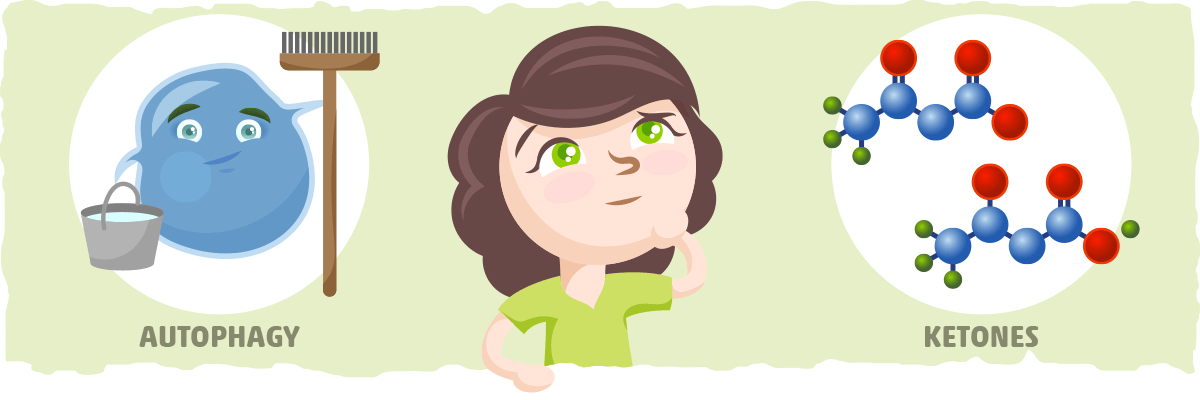
Intermittent fasting has become wildly popular over the past few years. Well-known doctors and researchers swear by it.
However, intermittent fasting isn't the magic bullet for health and weight loss that many make it out to be. Most of the benefits that we get from restricting our eating window can be explained by being in a calorie deficit.
While intermittent fasting, it is much easier for us to maintain a calorie deficit, which results in weight loss and improved metabolic function. This is arguably the main reason why skipping meals can be so effective for enhancing many aspects of our health.
With that being said, intermittent fasting can provide us with benefits that extend beyond a calorie deficit because fasting stimulates autophagy and ketone production. We take a closer look at how these two processes enhance our health in this article.
So, what does all of this mean for you? It depends on your lifestyle preferences and the results you are already getting for your diet.
Some keto dieters, for example, are already experiencing amazing results, so I generally suggest that they stick with what they are doing and only use intermittent fasting if they need to a plateau-busting strategy.
Conversely, other keto dieters simply feel best when they skip a meal or two, so they would do best with an intermittent fasting schedule that mimics their energy needs.
Regardless of what you decide to do, you will be able to get the results you want, with or without intermittent fasting. This is because the most important variable that determines your body composition is not how long you fast, but how much of each macronutrient you are eating.
Finding Your Macros
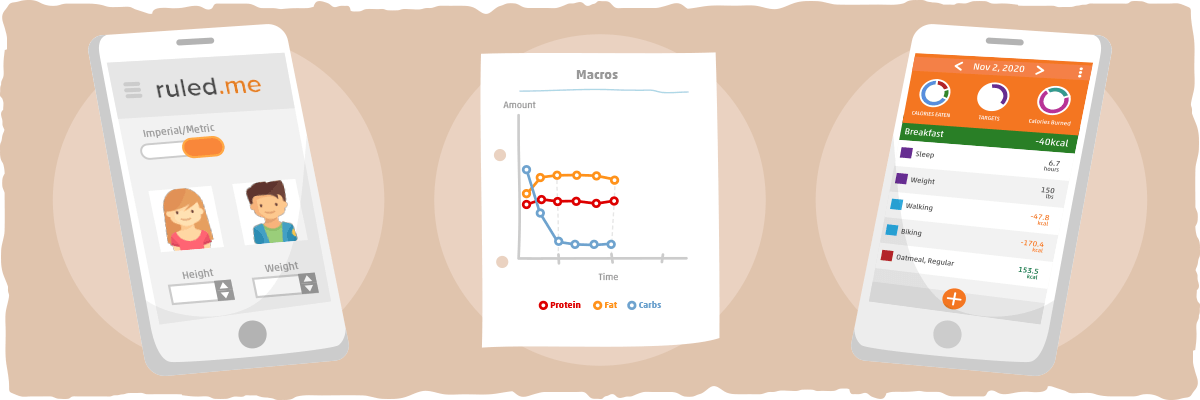
Although you can figure out how much you need to eat through trial and error, the quickest and simplest way is by using our keto calculator.
Simply fill it out with your personal information and click "calculate" for an estimate of how much you need to eat to meet your goals. If you have any questions, just click the "i" icon or scroll to the bottom of the keto calculator web page for the answer.
Once you have your personalized calculations, we recommend tracking your calorie, fat, protein, and carb consumption at first. This gives you a better idea of what you need to eat to reach your body composition goals without continually having to guess and hope for the best.
To help you track your macro intake, try using a food tracking app like MyFitnessPal or Cronometer. We put together a comprehensive step by step guide on how to use these apps for keto to make the tracking process much easier for you. (Click here to access the guide.)
Now, keep in mind that you might need to eat a decent amount of calories at each meal while you incorporate intermittent fasting into your diet plan.
You might need to eat 1,000 calories or more at one sitting, and as you extend your fasting window, you will have to increase your meal size. To help you adapt to this change, our intermittent fasting meal plan starts with a longer feeding window.
Daily Overview
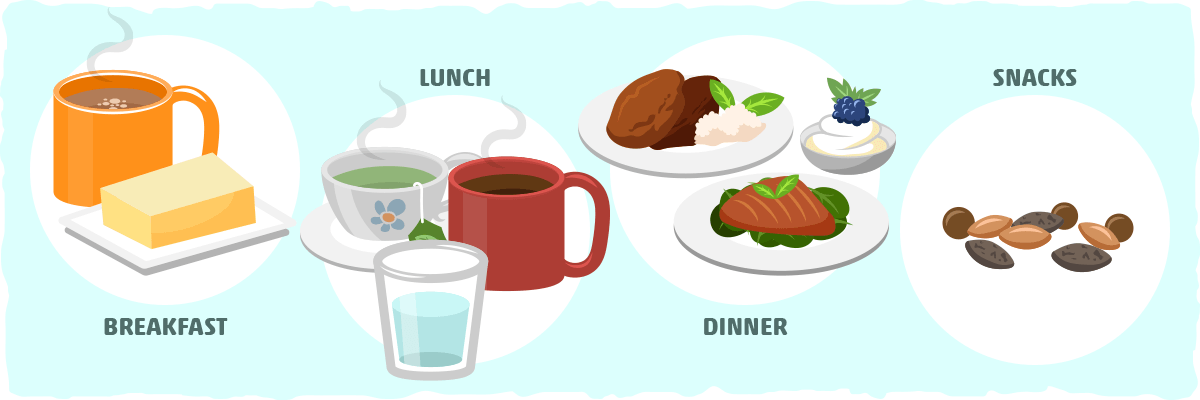
Breakfast – Ketoproof Coffee
A mixture of oil, fat, and coffee to keep you fueled for the day. Here's the recipe for Keto Coffee. (Not a fan of coffee? Try having our Iced Ketoproof Green Tea instead.)
So, why drink Ketoproof Coffee? It gets your metabolism off to a great start, giving you a hunger-suppressing energy boost without having to consume as many calories as you normally would for breakfast.
The medium chain triglycerides and caffeine in the coffee will help increase your ketone levels, and the fats will help satiate you while giving you a ton of energy. You can't go wrong!
Now, keep in mind that we are loading up with fats here. This means that consuming Ketoproof Coffee will technically break your fast. However, as long as the only calories you are getting are from fat, you will reap most (if not all) of the benefits of intermittent fasting.
If you want to do a true fast, then you must not consume any calories at all during your fasting window. In other words, you would have to drink black coffee instead of Ketoproof Coffee. However, I doubt there is a significant difference between the two, so do whatever works best for you.
During week 3 of this meal plan, we will keeping the fat away from our coffee, so if you'd rather ease into a longer fasting window over the next few weeks, then just stick following to the plan as is.
In either case, you will not be taking in any protein in the morning. You will need to keep this in mind as you plan your dinner, making sure you get enough protein.
Lunch – Water, Tea, & Black Coffee
It doesn't really matter what you drink as long as it doesn't have fats/protein/carbs in it. Caffeinated is fine, but keep in mind that too much caffeine later in the day will interfere with your sleep quality in such a way that your health and dieting progress will suffer.
While I am intermittent fasting, I aim to drink just over a gallon of water a day (or 4 liters to be more precise) and drink most of it in between my "breakfast" and my eating window.
As your kidneys get used to processing the water, and your bladder gets used to the increase in the amount of water you're intaking – you won't have to go to the bathroom as much. I know it can be troublesome for the first two weeks to drink that much water, but it's extremely good for you to do so, especially while you are adapting to keto.
Dinner – Follow Meal Plan Below
Add cheese/butter/dressings/oils to bulk calories, if needed. We also must get that protein that our bodies need (and we haven't had for the entire day). Think lean meat or fish here. Chicken is great because it's high in protein and not too high in fat.
Wait, wait, wait, but I thought this diet was high fat? Yes, it is – but we can get the fat from other sources. Don't you worry! Fats are very easy to add in, but protein is not as easy.
We can get fats from plenty of side items, sauces, dressings, and even straight from the spoon. If you need extra fats, just add more cheese, add a knob of butter, or make a side salad and dress it with a high-fat dressing and some olive oil.
Snacks? No Snacks!
No snacking! Well, you can snack, but try to stay away from it as much as you can. You want your body to stay in a fasting state until the beginning of your eating window. If you're snacking, then you will interrupt the process.
That being said, you can snack on some nuts if you feel like you absolutely have to. If you do end up taking a handful of nuts, make sure that it's only once and not throughout the entire day.
Intermittent Fasting Keto Diet Meal Plan
Now, we are ready to dive into the meal plan.
I've put together the meal plan for weeks 1 and 2. I think most people would enjoy this type of food, so that's why I picked it. Not to mention, there are some of my favorites here.
If you're strapped for time, you can always make all of this food on the weekend, shove it into Tupperware containers, and put them in the freezer.
The MOST IMPORTANT part of this is to eat your food and have variety. When you don't have variety, you start to get bored, and your mind wonders to other…sweet sweet places. That's what we don't want!
This is a general meal plan, not intended for exact use. You need to do some work here (sorry!) by calculating the amount of calories, fat, and protein you need per day, and breaking it apart into what you should be eating. Remember that every day (for the first two weeks), you'll be drinking Ketoproof Coffee for breakfast, so that takes away about 500-600 calories from your daily calorie intake and makes it easier for you to meet your fat needs.

Day 2 and Day 5:Chorizo Cheddar Meatballs
Serve with a side salad or a side-dish of your favorite low-carb vegetables. I usually recommend trying to eat leafy greens where possible.

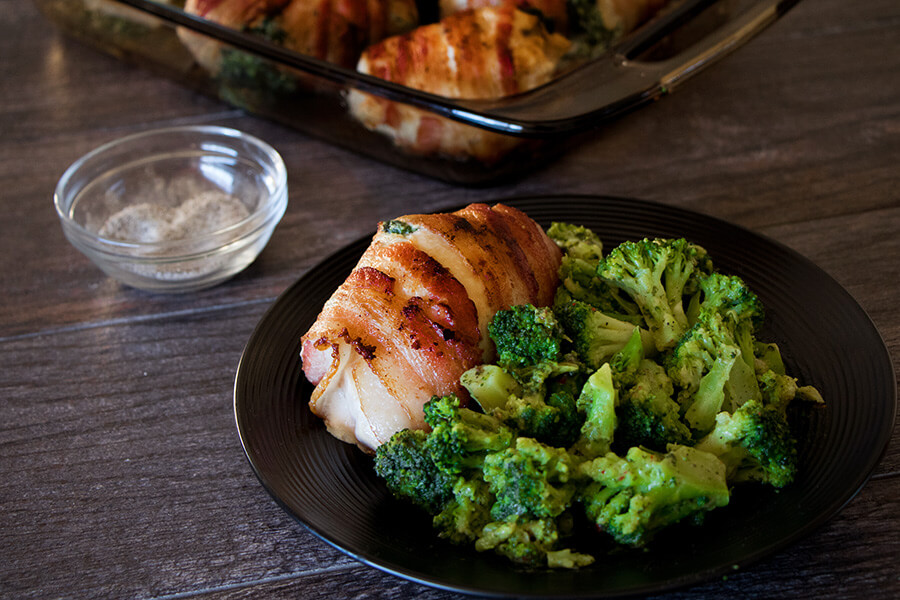
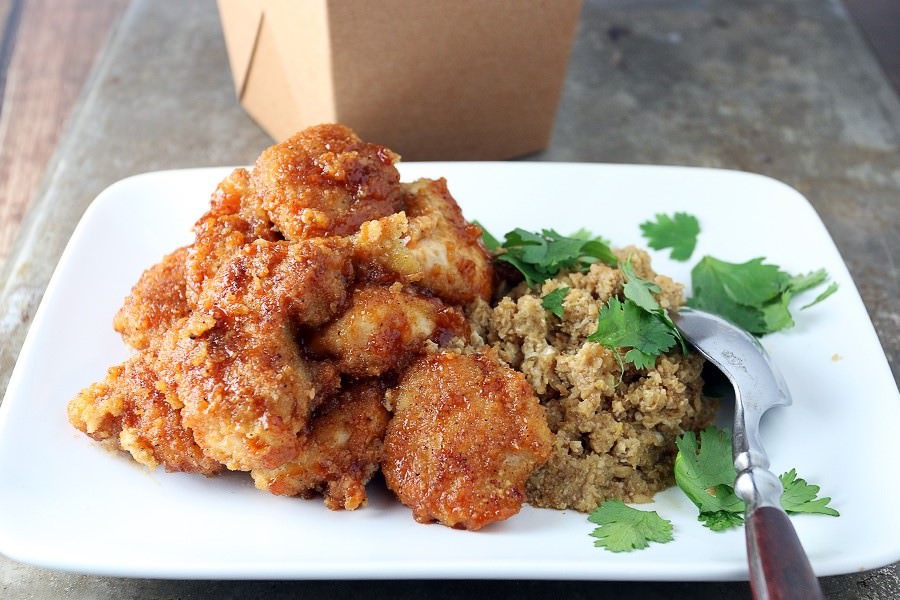
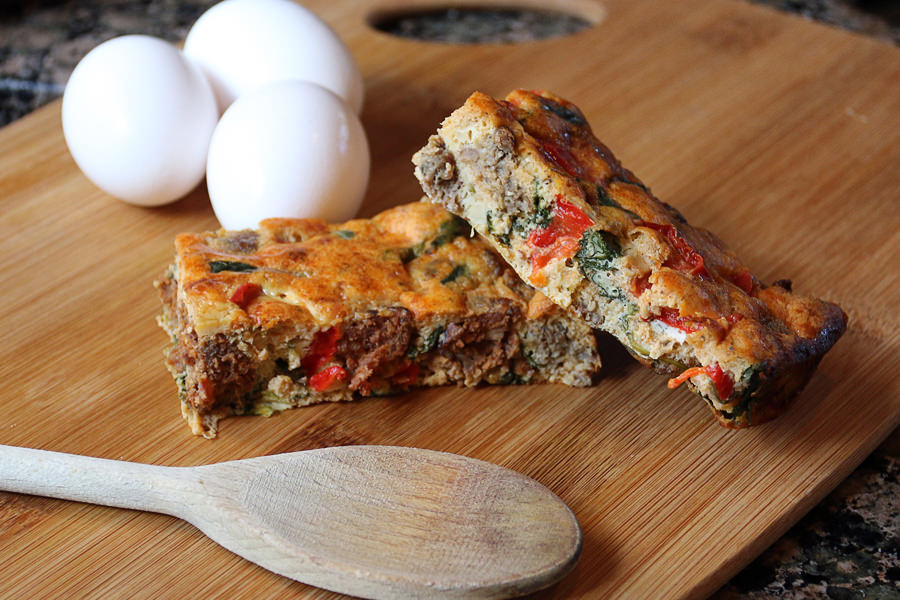
Week 2 we will repeat the exact same thing as we had during week 1. If you have more leftovers of one recipe than another, feel free to sub out the planned meal for something you actually have.
Adjustments for Weeks 3 & 4
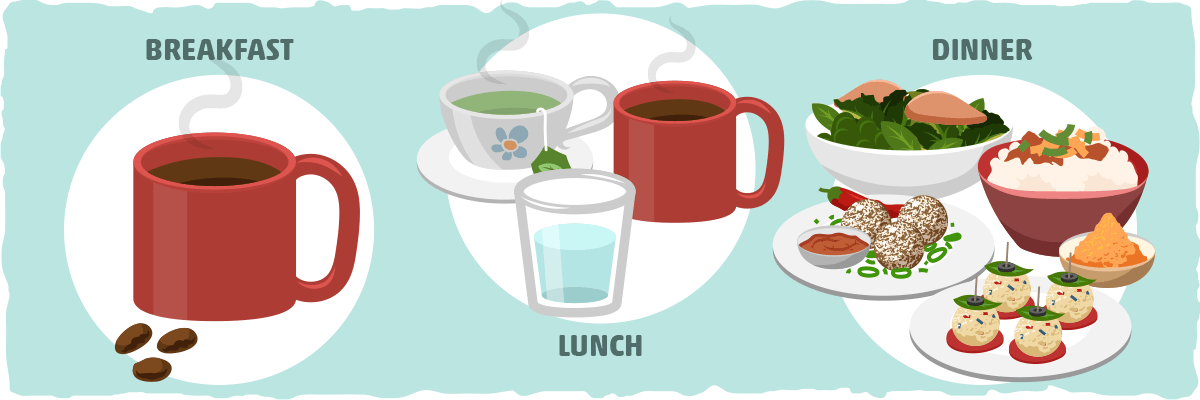
Now that you've had a chance to adapt to a pseudo-fast, we are going to start being more aggressive with our fasting window here. We'll turn it into a 21/3 or an 18/6 fasting protocol.
What do these numbers mean? 21/3 means 21 hours of fasting and 3 hours of eating, and 18/6 means 18 hours of fasting and 6 hours of eating.
Obviously, this doesn't mean you'll be eating for 3 or 6 hours nonstop, but it is your "window" of opportunity to get all of your daily calories in. If you're not the best at eating a lot of food in 1 sitting, choose the 6-hour window.
Breakfast
We're going to stop drinking Ketoproof Coffee for breakfast, and only be eating one meal per day. Instead of having your normal Ketoproof Coffee, just settle with a black coffee (or tea) with nothing else added. Anything with calories is not permitted if you want to implement a true fast.
Lunch
Lunch is going to be the same way as before. Tea, coffee, water, or whatever zero carb/fat/protein drink you want. Stay hydrated as you have been.
Remember, no snacking! We need to get more strict here, and your metabolism should have started to get used to your fasting schedule. Try to avoid your snacking at all costs, creating a fasting environment for your body. This will allow you to get the most out of your fast.
Dinner
When dinner time rolls around, you have a few choices. You can start breaking your meals into dinner and dessert. This is what I normally do.
Sometimes when I eat too much protein and fats, I just can't force myself to eat more. However, as you know, hitting our calorie needs is important. This is when keto desserts will save the day. (Sweet is easier to eat.)
You can also keep your meals exactly the same, just increase the portion sizes. That way you're getting the needed calories but not having to do extra work.
If you choose to take the dinner and dessert route, keep your macros in mind. Pick sweets that are high in fats if your dinner is high in protein. Conversely, pick sweets that are high in protein if your dinner is high in fats. Be smart about it, and always keep your macros in mind.
What about the meal plan? Well, it's the same as last week. Just this time you'll have to be eating more. You can keep your meals exactly the same, and then add some things for your dessert to make up for not drinking the Ketoproof Coffee.
If you need more fats, just like before you can add oils, dressings, cheese, butter, or whatever you need to in order to get to your macros.
Desserts are finicky things, and I don't like making choices for people because usually with sweets everyone has their own special tastes. To help you find keto desserts that you'll love, follow this link to our keto recipe page.
Keto Shopping List for the Meal Plan
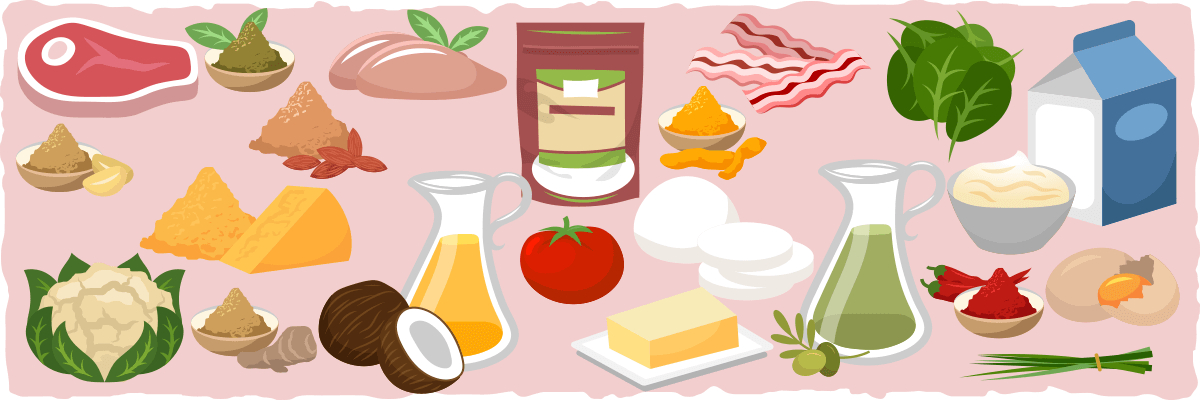
This shopping list is for two weeks' worth of food. The ingredients listed is enough to make the full 2 weeks and some leftovers.
This food list is based on the above meal plan. However, keep in mind that you need to be aware that depending on your needed calories, you will need to make more or less food. I give a round estimate of how much I personally make.
Most of the recipes I list are pretty savable. You can freeze leftovers and use them in the following week when we turn the fasting into a more intense approach. Alternatively, you can refrigerate them for a couple of days and have them later in the week.
Meat
- 3 lb. Ground Beef
- 5 Chorizo Sausages
- 2 Italian Sausages
- 2 lbs. Boneless and Skinless Chicken Thighs
- 2 lbs. Boneless and Skinless Chicken Breasts
- 12 Slices Bacon
- 22 Large Eggs
Fats
- 15 Tbsp. Heavy Cream
- 2 Tbsp. Sour Cream
- 3 Tbsp. Olive Oil
- 15 Tbsp. Organic Coconut Oil
- 18 Tbsp. Grass Fed Unsalted Butter
- 2 Tbsp. Sesame Oil
If you prefer another fat, you can choose it over the ones I use.
Cheese
- 2 Cups Shredded Whole Milk Mozzarella Cheese
- 4 Cups Cheddar Cheese
- 4 Ounces Cream Cheese
- 6 Tbsp. Parmesan Cheese
- 1/2 Cup Full-Fat Ricotta
Vegetables
- 1 Medium Green Pepper
- 1 Medium Onion
- 1 Head Cauliflower
- 10 Ounces Frozen Spinach
- 2 Cups Tomato Sauce
- 2 Small Scallions
- 2 Stalks (12 g) of Green Onion
- 2 Stalks of Celery
- 4-6 Servings of Your Favorite Low-Carb Vegetable(s)
Extras
- 1/2 Cup Almond Flour
- 1/2 Cup Erythritol
- 1/2 Cup Rice Vinegar
- 14 Cups Coffee
- 1 Bag of Pork Rinds
- 4 Tbsp. Sugar-Free Ketchup
- 6 Tbsp. Frank's Red Hot Original
- 2 Tbsp. Soy Sauce
- 1 Tbsp. Fish Sauce
Go for the pork rinds that are light and airy. We'll be grinding these up and you want nice light consistency, not hard and dense.
Grinding your own coffee beans usually yields a better cup of coffee, so try to get some nice organic coffee in your diet.
Spices
- 3 Tbsp. Kosher Salt
- 5 tsp. Garlic Powder
- 2 tsp. Chili Powder
- 2 tsp. Cumin
- 1 tsp. Ginger
- 2 tsp. Dried Oregano
- ½ tsp. Black Pepper
You're welcome to add more spices to your food, cayenne pepper, more salt and pepper, or paprika.
I do realize that you can't go to the store and buy only two teaspoons of chili powder or a 1/2 teaspoon of black pepper. You have to decide what will be right for you, and maybe you'll end up buying a bit more than you need. But don't worry, you can always use the leftovers later on!
Now, keep in mind that this is solely for the single dishes we will be having. You'll need to make sides, such as steamed broccoli with a cheese sauce or a side salad. Choose the vegetables as you wish, and consider what keto sauces, condiments, or dressings you could have with the vegetables.
Ideas: creamed spinach, butter roasted asparagus, butter fried green beans, broccoli with cheese sauce, cauliflower with cheese sauce, or a light salad with heavy dressing.
What's Next? Intermittent Fasting & Keto after the Meal Plan
After you've tried our meal plan, take a moment to assess how it went.
- How did you feel while you were fasting? Were you struggling to make it to your next meal while fantasizing about food or were you able to stay focused throughout the day?
- Does intermittent fasting fit with your schedule and lifestyle better than eating meals throughout the day?
- Is an intermittent fasting schedule a better strategy for you to sustain weight loss than what you were doing before?
Your answers to these questions will provide you with enough info to determine whether or not intermittent fasting is a good dietary strategy for you.

Some people just can't put up with fasting and need to have evenly spaced meals throughout the day, while others experience more energy and focus when they don't have breakfast.
Some keto dieters are able to get incredible results when they use intermittent fasting while others feel worse and don't experience much of a benefit at all.
If you think that intermittent fasting isn't right for you, then there's no need to force it. Just by maintaining a calorie deficit and following the keto diet, you can experience most of the benefits that you would get from intermittent fasting anyway. Follow whatever meal schedule works best for you, and use the principles in our "How to Lose Weight on the Keto Diet" article to guide you in the right direction.
On the other hand, for those of you who, like me, find it much easier to lose weight, stay on track, and maintain energy while intermittent fasting, your next step is to figure out what fasting window works best for you and your schedule. I personally stick to a 16-18 hour fasting window with two meals during my feeding window, while others have no problem waiting until dinner.
You can also do a pseudo-intermittent fast by drinking Ketoproof Coffee in the morning and waiting until dinner time to meet your remaining macro needs.
In general, as long as you are getting relatively close to meeting your macros on a daily basis, you will be able to achieve the results you want (for the most part). How long you fast on a daily basis only plays a minor role in the results you get, so it is up to you to determine what fasting schedule works best for you.
Whether you decide to continue using intermittent fasting or not, here are some resources that will help you get the results you want:
- How to Lose Weight on the Keto Diet
- How to Break Through Weight Loss Plateaus (with and without intermittent fasting)
- Hundreds of Delicious Keto Recipes for Breakfast, Lunch, Dinner, and Dessert (so you don't have to eat all of the same meals from our meal plan over and over again)
- Intermittent Fasting on a Keto Diet (for more info on intermittent fasting)
Source: https://www.ruled.me/keto-guide-intermittent-fasting/